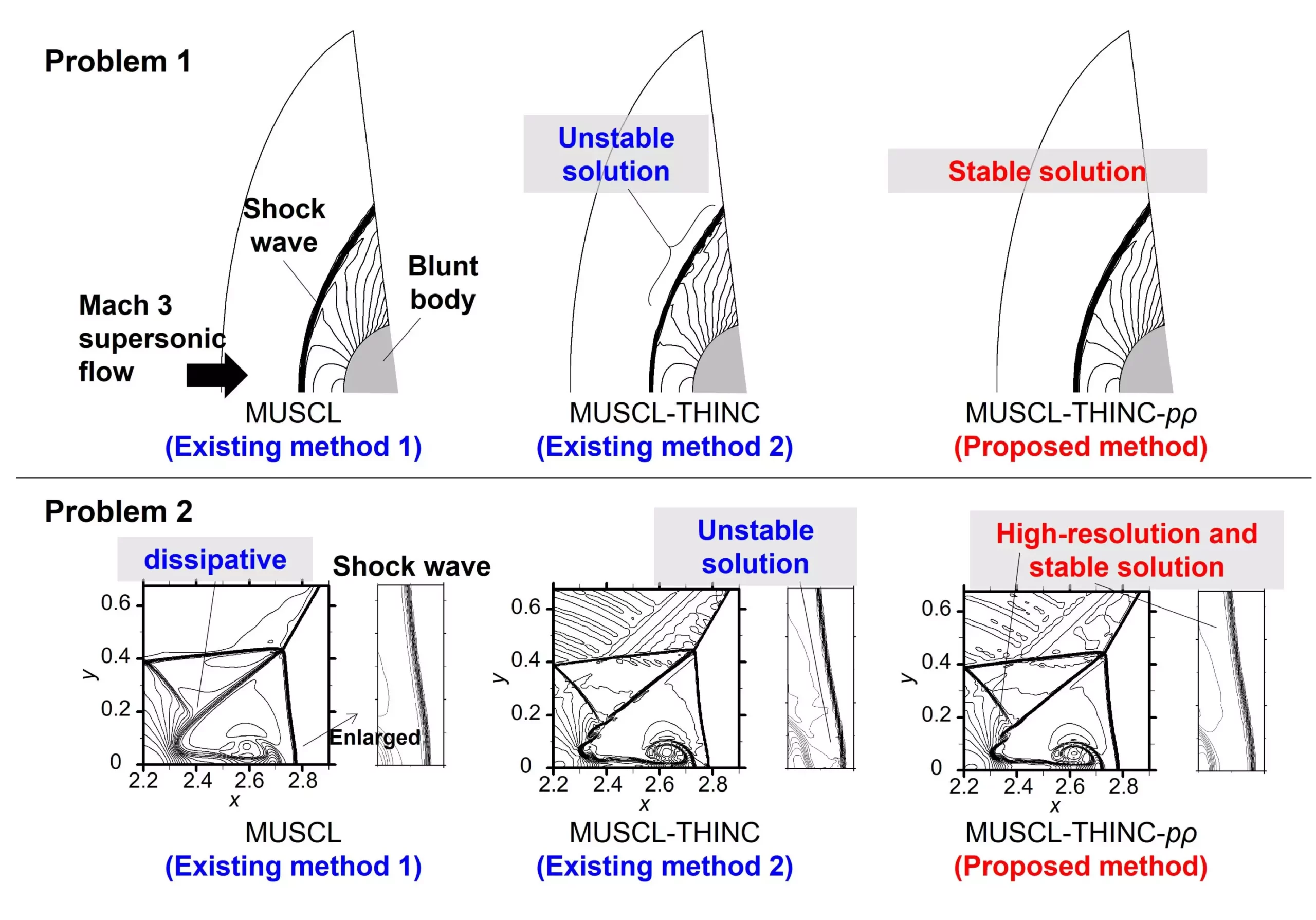In the intricate world of fluid dynamics, the ability to accurately simulate compressible flows has long posed significant challenges for researchers and engineers. Traditional methods, even those that have garnered widespread acceptance, often fall short when tasked with modeling phenomena such as shock waves or discontinuities that arise in high-speed flows. A recent initiative from a team of researchers at Yokohama National University promises to bridge this gap with their innovative hybrid method known as T-MUSCL, presenting an exciting frontier for advancements in engineering fields ranging from aerospace to mechanical systems.
At its core, T-MUSCL combines the robust attributes of the monotonic upstream-centered schemes for conservation laws (MUSCL) with the tangential hyperbolic interface capturing (THINC) method, yielding a new approach that maximizes accuracy and stability in complex flow situations. Published in the esteemed journal *Physics of Fluids*, this work showcases the potential for elevating the simulation methods available to engineers tackling real-world problems that demand precise fluid behavior modeling.
Understanding the Components of T-MUSCL
The brilliance of the T-MUSCL method lies in its adept handling of the nonlinearity and discontinuity present in compressible flows. Traditional MUSCL has long been utilized in aerospace engineering due to its ability to represent fundamental flows with relative accuracy. However, it struggles when faced with intricate flow scenarios where shock waves complicate the numerical landscape. The T-MUSCL scheme, by contrast, claims to sharply resolve weak shock waves while robustly addressing strong shock waves—characteristics that are essential for an accurate representation of physical phenomena.
Researchers Keiichi Kitamura and Gaku Fukushima highlighted that their innovative scheme employs two crucial parameters—a nonlinearity-weighted parameter and a slope-ratio-weighted parameter. These components are designed to finely balance the reconstruction process with the physical realities of the compressible flow being modeled. The result is a method that not only produces high-resolution simulations but also significantly reduces numerical dissipation errors that have long plagued the field.
T-MUSCL: Redefining the Standards of Fluid Simulation
One of the standout features of the T-MUSCL scheme is its remarkable accuracy, especially in cases where conventional MUSCL fails to provide precise solutions. This new methodology allows scientists to effectively capture both moving and stationary shock waves, even in scenarios where previous approaches struggled to maintain fidelity in their simulations. With an improvement in convergence behavior for steady two-dimensional blunt body problems, T-MUSCL exemplifies a leap forward in optimizing fluid dynamics simulations without encumbering practitioners with unnecessary mathematical complexity.
Kitamura’s assertion that their approach yields high-resolution, robust results using simple expressions is not merely a sales pitch but a clarion call to fluid dynamicists everywhere. The simplicity of use coupled with the methodological advancements positions T-MUSCL to be integrated seamlessly into existing algorithms, suggesting that adoption will be both accessible and practical for a broad array of users.
Future Implications: Transforming the Landscape of Fluid Dynamics
Looking ahead, the implications of the T-MUSCL method stretch far beyond theoretical advancements; it opens the door to real-world applications that could revolutionize industries reliant on accurate fluid simulations. As Kitamura and Fukushima prepare to apply their method to actual engineering challenges, the potential for significant contributions to aerospace and mechanical engineering becomes palpable. By deepening our understanding of compressible dynamics and shock waves, T-MUSCL doesn’t just enhance simulation quality; it aligns closely with the immediate needs of a burgeoning industry continuously seeking more reliable technological solutions.
Additionally, the team’s ambition to ensure that their method becomes widely adopted reflects a broader vision within scientific communities: a shift towards methods that prioritize both accuracy and user-friendliness. This proclivity for practical applicability is crucial in ensuring that cutting-edge research translates into improvements in real-world engineering practices, possibly leading to advancements in safety, efficiency, and performance across various applications.
A Paradigm Shift in Engineering Practices
In essence, T-MUSCL represents not just a technical achievement but a paradigm shift in how we approach the simulation of compressible flows. By overcoming the inherent limitations of conventional methods, this innovative scheme signals a new era where researchers can explore complex flow dynamics with confidence. As more engineers embrace this technology, the landscape of fluid dynamics simulations will likely transform, inspiring new engineering solutions that were previously unimaginable.
With T-MUSCL, the future of fluid dynamics looks not just promising but revolutionary, as researchers and engineers continue to push the boundaries of what is possible in the realm of compressible flow simulations.


Leave a Reply